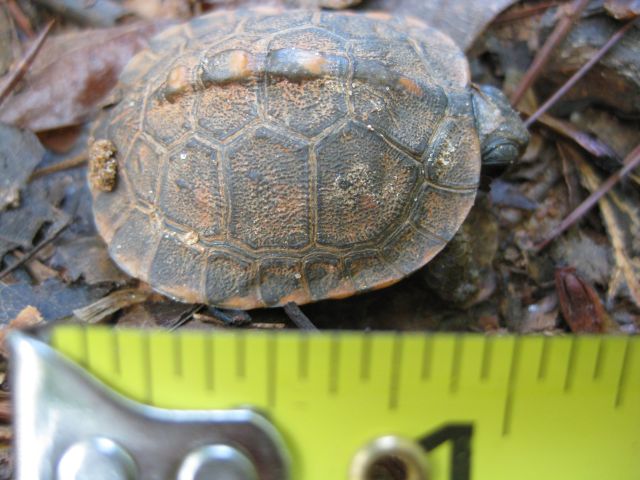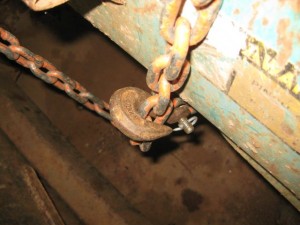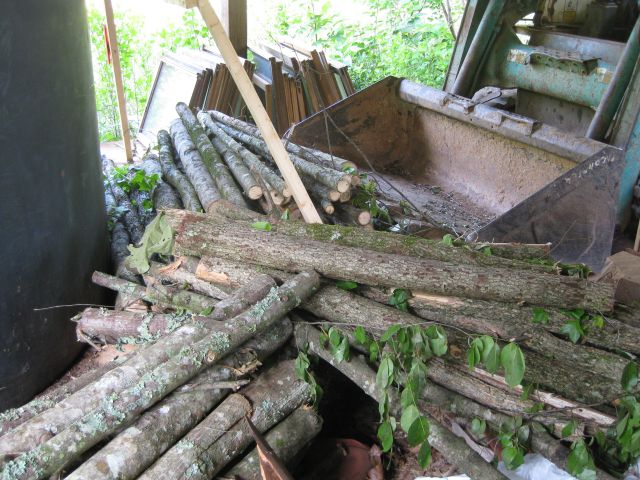The past few weeks I have been preoccupied with cutting a new trail through the woods. The northwest part of the property slopes down a hill and its face is creased with contour ditches and berms installed I know not by whom or when. There is a small spring which forms a stream which slides off the property. My new trail is designed to give me access to the spring and to meander among the fast growing tulip poplars. Since this is the north facing slope, which is sheltered from the sun and benefits from the contour ditches, it also has ferns and mosses and a wildness of growth.
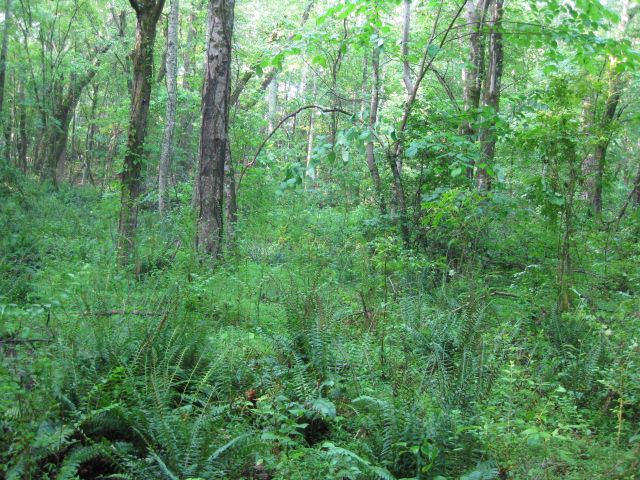
My trail is maybe half a mile long. I marked its intended route a year ago with yellow rope. Two weeks ago I began construction. Initially my thought was to make a road which my tractor could access, but my tractor is 7 ft wide and when hitched with a chipper cannot make sharp turns. So the road would have had to be fairly straight. My tracked bobcat on the other hand is 5 ft wide and can turn on a dime, which means it can easily dribble among the larger trees. So I settled on a trail rather than a road and saved a lot of larger trees and a lot of work.
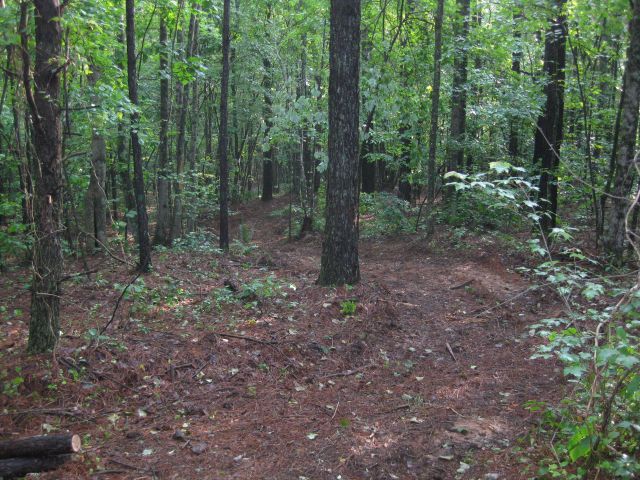
From previous experience I know not to leave any stumps, especially the smaller ones which upset the unwary, so instead of chainsawing and pulling the trees out of the way (and leaving stumps in place), I used my tracked bobcat to clear the way. Two alternative procedures.
For those trees with diameters up to 3″, I simply lifted them up out of the ground with a chain and slip hook. A slip hook allows the chain to run freely through it so as the bobcat pulled on the chain the hook tightened on the trunk of the tree. The other end of the chain was secured to the bobcat body with a grab hook which gripped onto a link of the chain. The slip hook worked fine on most of the trees except for one kind where the bark peeled off easily. In this situation I had to revert to the second procedure.
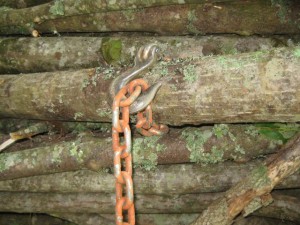
|
The second procedure, primarily for the larger trees, was to attempt to push the tree over with the bobcat loader pushing the trunk at about 5 ft off the ground. If the tree refused to budge I would cut the roots on either side of it with the loader teeth and then it usually could be pushed sufficiently to expose the base of the tree. Then, with the loader at ground level I would bulldoze the tree out of the ground and push it sufficiently far to sever its roots. The trees are interlocked by vines, mainly muscadine (grape vines) and they would have been hung up if I had merely chainsawed them. So the assistance of the bobcat was invaluable.
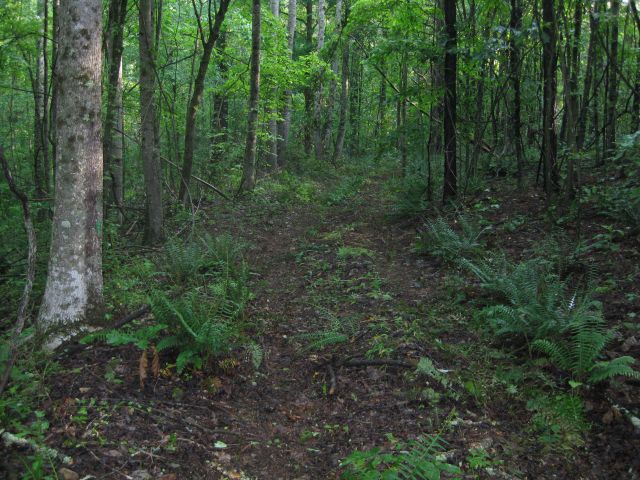
Once the trees were down I limbed and bucked the trees, that is to say I cut off the branches where they joined the trunks, and I cut the trunk into 5 ft lengths. The 5ft lengths of the hardwood trees fit into the bobcat’s loader and I brought them back to the log cabin and stored under shelter to dry for firewood use at year’s end. The pine trees trunks I will leave to degrade and return nutrients to the soil.
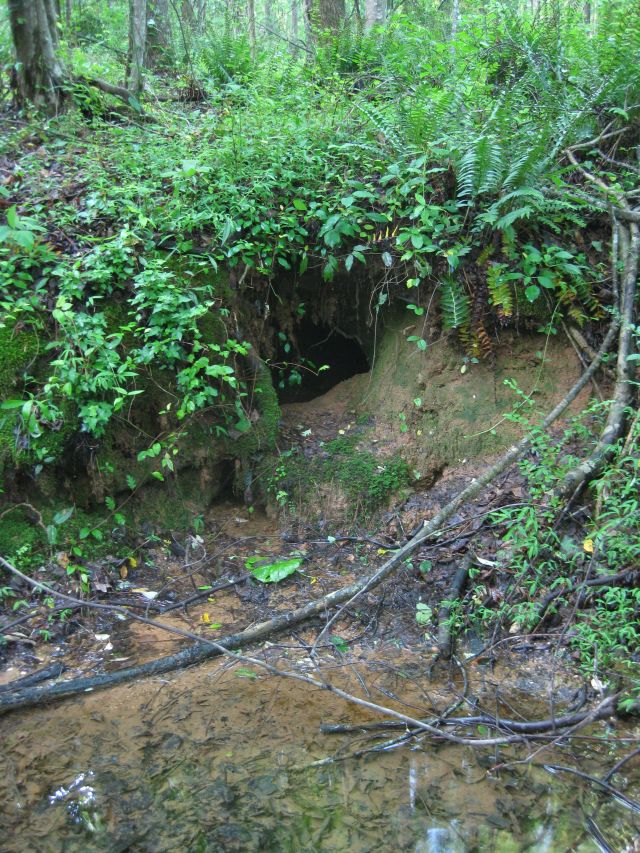
I made several additional trips with the bobcat – down the trail to collect the rootballs and dump them in a large gully at the foot of the slope, and up the trail to collect the 5ft wood lengths for transport to the storage area.
Finally my tractor came into play. I attached a woodchipper to the rear, which is driven by the tractor’s engine, and I have begun chipping the branches and odd wood lengths. The chippings will be spread along the trail.
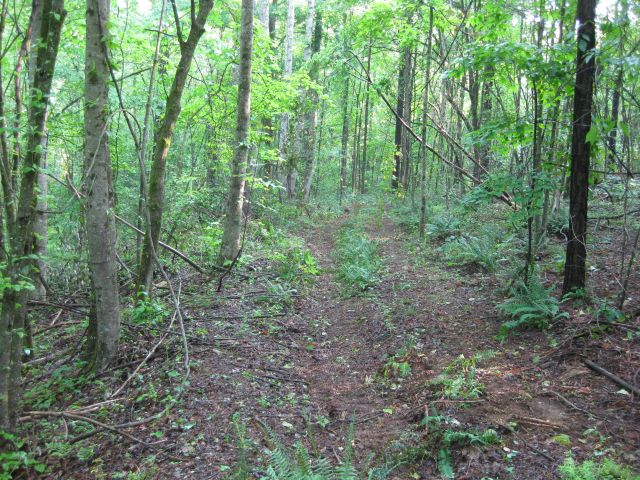
So much strenuous pleasurable work and a good result to date. I must acknowledge the contributions of Mike, who assisted on the first day with lassoing and removing the trees, and Simon, who on two days worked hard amidst the mosquitoes and diesel fumes to help me complete the task. On the way back this morning along the trail almost stepped on a baby turtle – it was on 1″ long – see below.
